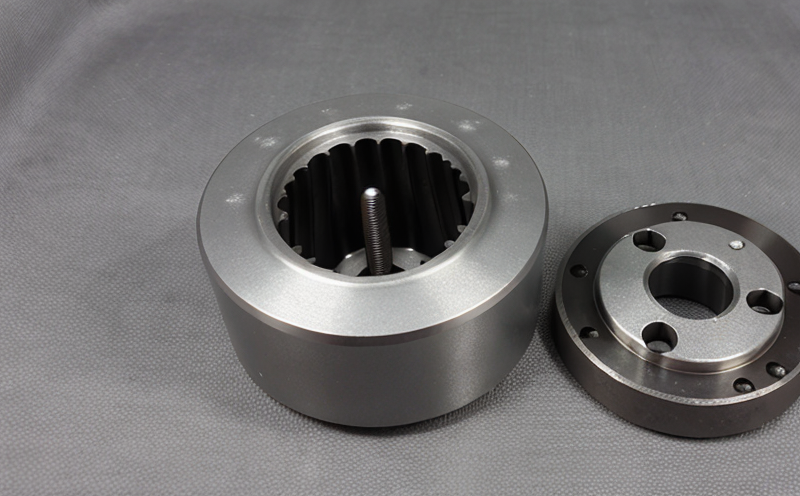ISO 4499-2 Metallography of Hardmetal Powders
The ISO 4499 series is a comprehensive set of standards that provide guidance for the examination and interpretation of metallographic structures in hardmetal powders. These materials are critical components in industries such as metallurgy, aerospace, automotive, and manufacturing where high-strength and wear-resistant properties are essential.
ISO 4499-2 specifically addresses the metallography of hardmetal powders, which includes carbides like WC (tungsten carbide), TiC (titanium carbide), and other alloying elements. The standard ensures that these materials meet stringent quality control requirements by providing detailed procedures for sample preparation, examination techniques, and evaluation criteria.
Sample preparation is a critical first step in the metallographic analysis process. This involves carefully selecting representative samples from batches of raw material or finished products. Samples must be polished using progressively finer grits of abrasive paper to achieve a smooth surface that allows for accurate observation under a microscope.
The examination techniques outlined in ISO 4499-2 involve the use of optical microscopes equipped with appropriate objectives and illumination systems to capture high-resolution images of the sample surfaces. Polarized light microscopy is often used to observe birefringence, which helps determine crystal orientation within the powder grains.
Evaluation criteria in ISO 4499-2 focus on quantifying key parameters such as particle size distribution, shape factors, and homogeneity of carbide content. These measurements are crucial for ensuring that the hardmetal powders meet specified performance standards required by end-users.
The standard also emphasizes the importance of repeatability and reproducibility in metallographic examinations. This ensures consistency across different batches or laboratories, which is vital for maintaining high-quality control practices within manufacturing processes.
Understanding these aspects not only aids in meeting regulatory requirements but also enhances product quality assurance by identifying potential issues early on during production stages.
In real-world applications, accurate metallographic analysis plays a significant role in optimizing the performance of hardmetal composites used in various industrial sectors. By adhering to ISO 4499-2 guidelines, manufacturers can ensure consistent and reliable outcomes that satisfy both internal quality standards and external regulatory expectations.
For example, aerospace companies rely on these methods to verify the integrity of components subjected to extreme conditions, while automotive firms use similar procedures to guarantee durability under high-stress environments. Additionally, in manufacturing settings where precision is paramount, compliance with ISO 4499-2 helps maintain optimal operating efficiency and safety standards.
By leveraging advanced metallographic techniques prescribed by this international standard, organizations can enhance their competitive advantage through superior product quality and robust reliability assurance measures.
Benefits
The implementation of ISO 4499-2 Metallography of Hardmetal Powders brings numerous advantages to laboratories specializing in this field. One major benefit is improved accuracy and consistency in testing results, which leads to better quality control practices throughout the manufacturing process.
Consistency among different batches or suppliers ensures uniform product performance across all end-use applications. This reliability fosters trust between manufacturers and customers, enhancing overall market reputation.
Another key advantage lies in reduced production costs due to minimized rework and scrap rates associated with non-compliant materials. By adhering strictly to the specified procedures outlined in ISO 4499-2, companies can streamline their operations while maintaining high standards of quality assurance.
Furthermore, compliance with these international standards demonstrates a commitment to excellence that appeals to regulatory bodies and industry stakeholders alike. It positions laboratories as leaders in their respective fields, thereby attracting more business opportunities both nationally and internationally.
Quality and Reliability Assurance
The primary goal of implementing ISO 4499-2 Metallography of Hardmetal Powders is to ensure that every batch produced adheres strictly to specified quality parameters. This standard helps laboratories maintain consistent results, thereby enhancing customer confidence in the products offered.
By following stringent guidelines for sample preparation and examination techniques, laboratories can identify any deviations from expected characteristics early on during production stages. Early detection allows corrective actions to be taken promptly before issues escalate into larger problems down the line.
This proactive approach not only prevents costly mistakes but also ensures that all batches meet exacting quality standards set forth by both internal policies and external regulatory requirements. It supports long-term relationships with satisfied clients who appreciate reliable performance from their suppliers.
Environmental and Sustainability Contributions
Incorporating ISO 4499-2 Metallography of Hardmetal Powders into laboratory practices contributes positively towards environmental sustainability initiatives. One notable contribution is the reduction in waste generation during sample preparation processes.
By optimizing procedures for polishing and sectioning samples, laboratories can minimize material loss significantly. This efficiency translates directly into lower energy consumption levels required for maintaining equipment used throughout the testing process.
The use of advanced technology like digital imaging systems allows for more precise measurements without compromising accuracy. Such technologies help reduce errors associated with manual recording methods while simultaneously decreasing paper usage in documentation processes.
Adhering to ISO standards also promotes best practices regarding chemical handling and disposal procedures, contributing further towards reducing environmental impact within laboratory settings. Overall, embracing this international standard supports greener operations that align well with global sustainability goals.





